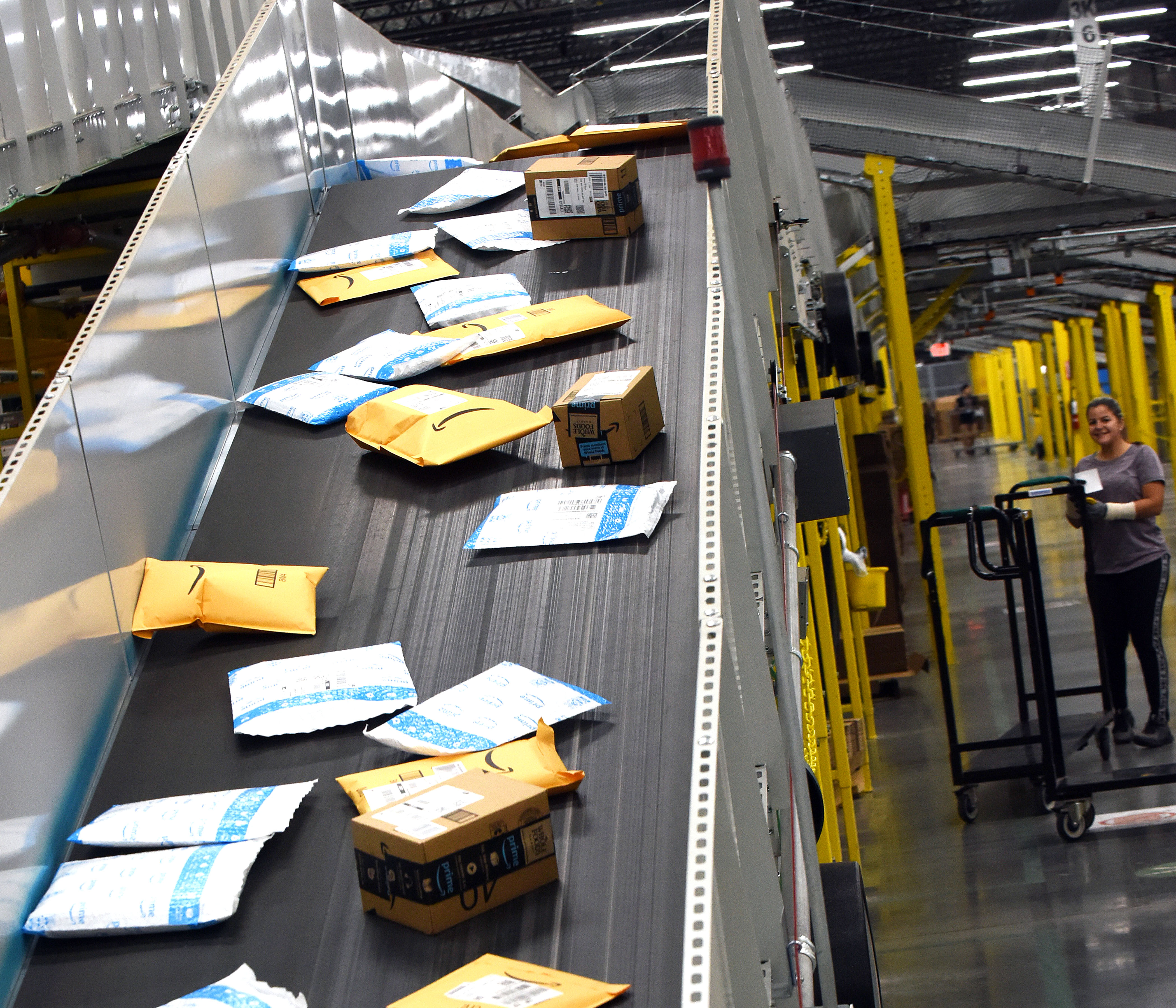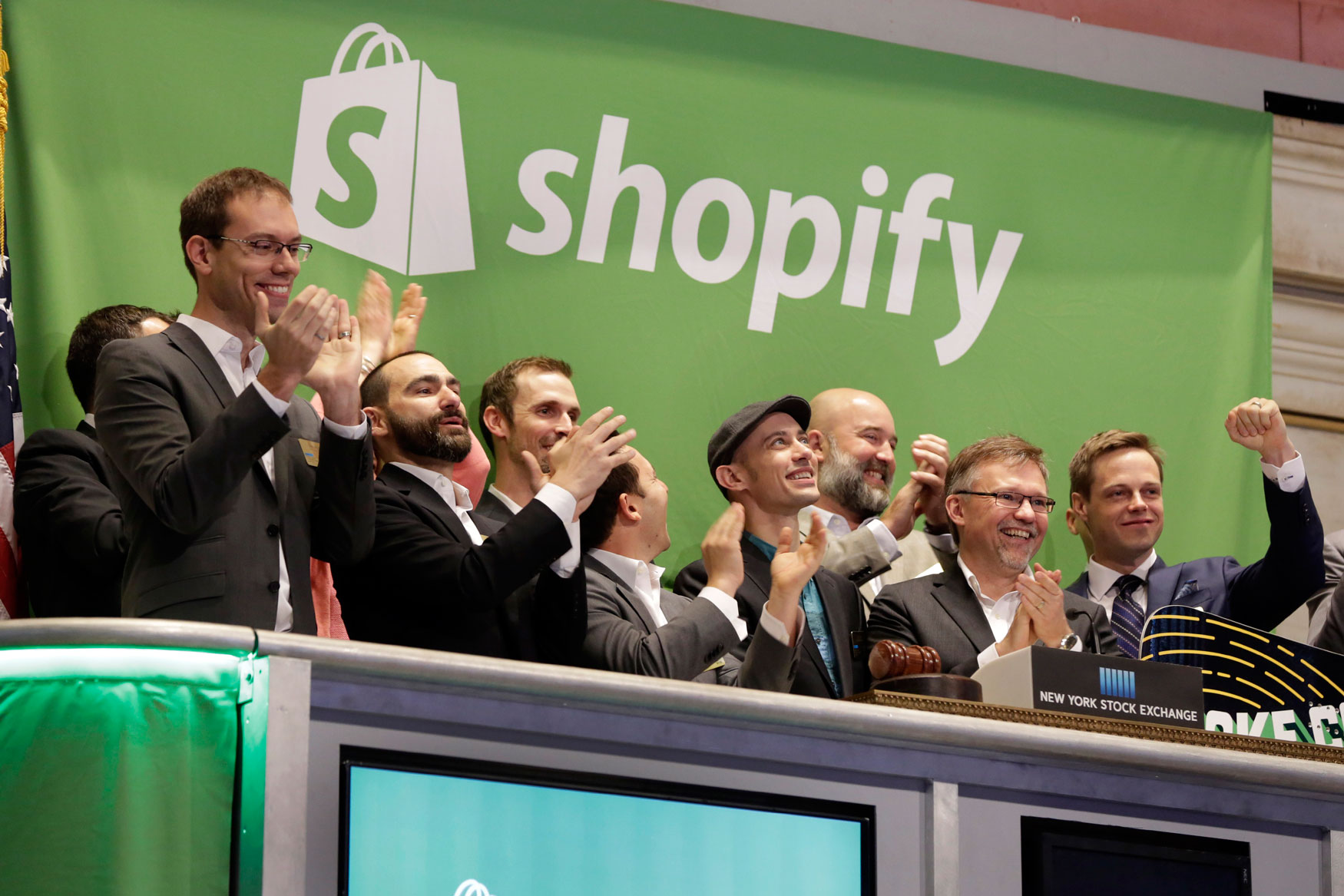Despite Automattic’s respected position, awareness of its myriad businesses tends to be spotty.
“I spend a lot of time with investors, press and research analysts, and I’m always stunned that people say, ‘We know WordPress.’ But they don’t know Woo,” says Mark Davies, Automattic’s chief financial officer, referring to the company’s WooCommerce subsidiary. “It’s always interesting when we say we’re doing $30 billion of payments volume through Woo and Automattic.”
Why should they care? For starters, WooCommerce is used by more sites than Shopify — which those same investors, press and analysts definitely know about.
It’s also the lifeline that Automattic needs this decade to rebuild the internet in an open direction. Sixteen years after its founding, the company has seen its valuation grow rapidly from $3 billion with a round led by Salesforce in 2019 to $7.5 billion with a share buyback a few months ago. That growth has been predicated on expanding beyond its traditional remit of publishing into the hugely lucrative terrain of e-commerce, as well as through its acquisition of Tumblr.
The strategy here is simple: Continue opening up larger swaths of the internet to open-source innovation outside of the walled-garden platforms developed by Amazon and Facebook. If Automattic’s strategy works out, Woo, Tumblr and WordPress will link to new services that nobody yet associates with Automattic.
It’s an audacious vision, but the company is setting itself up for a battle against some of the most formidable — and deeply pocketed — companies in the tech world.
From custom themes to billions in payments volume

WooCommerce began life as WooThemes, a small design firm that didn’t look very different from the many others that created WordPress themes. In 2011, the company expanded to build themes for online stores.
“They’d spotted an opportunity where a lot of the themes they were selling were more commerce oriented, so they hired some guys they were incubating for a commerce platform, brought them into the team, and that quickly overtook the company for the lion’s share of attention,” says Paul Maiorana, the current CEO of WooCommerce, a subsidiary of Automattic.
Despite WooCommerce’s popularity (its plugin was among the top 10 most popular for WordPress), its success was mostly contained within the broader WordPress ecosystem. When Automattic acquired WooCommerce in 2015, the move went mostly unnoticed in the broader tech community.
Automattic Buys WooCommerce, The Popular Plugin For Turning WordPress Into A Store
WooCommerce still had less than 100 employees, and it didn’t appear to be a significant buy. E-commerce, while obviously growing, had yet to reach stratospheric highs.
Internally at Automattic, there were uncertainties over whether WooCommerce was worth the purchase, the value of which was never disclosed but was described to TechCrunch at the time as “the biggest acquisition by Automattic to date.”
“Even at the board level, we honestly asked if we should even be doing this. Everyone is saying this is a bad idea and you can’t compete with Amazon,” recalls Matt Mullenweg, Automattic’s founder and CEO. The counter view was that it was important for Automattic to cover all its bases. “Our ambitions are incredibly broad, and we take a very long-term view.”
Before long, WooCommerce was exploding in size, and the acquisition proved to be one of the most important decisions Automattic had ever made. “I’d call it a significant moment, like the birth of a child,” says Mullenweg.
In a sense, Amazon was the driver of that growth. During the pessimistic down years following the dot-com crash, Amazon proved that e-commerce really could work. Later, it opened the doors to small merchants through Fulfilled by Amazon, which showed that they, too, could succeed.

For e-commerce merchants of every size, the next step was obvious: Building a stronger, independent presence, a home that wasn’t subject to the vagaries of Amazon.
“How can the success of Amazon, how does that create the need to balance it out? The yin and yang, the light and dark. The success of one thing creates the environment for something else to survive and balance it out,” says Mullenweg. “Any place you see something proprietary and very successful, there’s a huge opportunity, and the world will want an open alternative to it.”
Woo! Fighting for the future of e-commerce
Before it became a juggernaut, Shopify was just another entrant in the online storefront space. Founded in Ottawa in 2004, the company slowly accrued more and more customers around the same time as WooCommerce was gaining its early traction.
Shopify gained some notoriety when it went public in 2015, the same year that Automattic was mulling its WooCommerce acquisition. Since then, Shopify’s stock price has jumped nearly 47x, making it one of the fastest-growing publicly traded tech companies in the world.
Tech IPO Scorecard: Shopify Skyrockets 51%, While Baozun Rises A Slimmer 4.6%
Both WooCommerce and Shopify latched onto the accelerating growth of e-commerce, and both companies benefited massively during the COVID-19 pandemic when retail stores closed down and online storefronts jumped in sales volume.
According to U.S. Census data, e-commerce steadily grew from around 7% of all domestic sales in 2015 to 11.4% in 2020, before jumping to a high of 15.7% at the peak of the pandemic.

Which company is bigger today depends on your perspective: Shopify undoubtedly earns more, with a whopping $3 billion of revenue in 2020, mostly driven by fees on payments as opposed to subscription revenue. But WooCommerce is used by 28% of the top million sites, versus one fifth for Shopify, according to BuiltWith. (In third place, Adobe-owned Magento is far behind both in terms of number of sites, although it tends to target the largest, most lucrative storefronts.)
The close rivalry only inspires admiration at Automattic. “I think Shopify is an awesome company,” Automattic’s CFO Davies said. Instead of considering Shopify a rival to be beaten, he sees it as occupying a space analogous to Apple in the smartphone market.
“We think, ultimately, there probably will be a couple different end winners. We think open source will be a winner in e-commerce, and Shopify may be the Apple,” says Davies.
Plugins for plugins, or it’s just plugins all the way down
In the battle against Shopify, Automattic gains confidence because it’s working on a broader strategy. “Our ambitions are much larger,” says Maiorana, WooCommerce’s CEO.

In Automattic’s vision, the broader WordPress platform underlying Woo will enable the fabrication of functionality that would be impossible for proprietary software to replicate. To illustrate, Maiorana uses the example of CraftPeak, an agency that uses Woo to build websites for breweries.
“Before COVID, the presence for many of these craft brewers was more like a brochure than a website, but CraftPeak has been guiding them through selling swag, physical goods; now that they can deliver beer they’ve added that in there, brewery tours and tickets,” says Maiorana. Each of those functions differs from the usual click-to-purchase flow seen in a typical e-commerce store, requiring different code or plugins to achieve — a range of functionality that, he thinks, is easier to achieve in WordPress.
“The point of Woo is not to compete with Shopify, come here and sell the exact same thing. The point of Woo is, you want to do tickets? You want to sell subscriptions? They’re all possible on Woo and not on these other places,” summarizes Toni Schneider, Automattic’s CEO in its early years and a partner at True Ventures, which backed the company.
Shopify actually closely resembles WordPress: It describes its offering as a “retail operating system” where users can easily install plugins and themes. Its third-party developers offer well over a thousand plugins for purchase, and some startups — such as Shogun, which designs more sophisticated e-commerce storefronts than what’s available out of the box on Shopify’s platform — have raised voluminous venture capital dollars.
WooCommerce, of course, follows the same model, although many of its plugins are free, reflecting the nature of the platform. Woo itself is also, technically, just a plugin to WordPress.
More problematically, WooCommerce is behind Shopify in some core functionality. Plugins for payments and shipping, for instance, are solved problems on Shopify, which earns a percentage of each transaction. On WooCommerce, where the commercial demands aren’t as forceful, those plugins are still in development.
Much like how Wix and Squarespace made more revenue with easier-to-use but narrower website builders against WordPress, as we saw in part one of this TC-1, Shopify has built an easier and more fully integrated offering for e-commerce.
Automattic’s wild bet as it Tumblrs into the future

WooCommerce is a key part of Automattic’s strategy. What else, then, fits in?
Pretty much everything. During interviews, executives named verticals like e-learning, marketplaces, advertising and crowdfunding as potential areas for WordPress and — by extension — Automattic to expand into.
Social networking, though, may be the most interesting potential vertical. WordPress mostly sat out the rush to social, as blogs found their ability to drive the internet’s conversation forward eclipsed by proprietary platforms like Twitter. When Automattic announced its purchase of Tumblr in 2019, it appeared ready to change that.
In case you’re one of the few internet denizens who doesn’t clearly recall Tumblr, here’s a recap: The site was founded in 2007 to combine blogging and social networking. During its first few years, it exploded in popularity. “If you had asked in the early 2010s who would kill WordPress, people would say Posterous and Tumblr,” recalls Mullenweg.
Yahoo Board Has Approved A $1.1 Billion Cash Deal For Tumblr, WSJ Reports
At the same time, though, Facebook was emerging as an even hotter trend. Tumblr’s growth eventually leveled off, although a huge population of dedicated users remained. In 2013, Yahoo, under the direction of then CEO Marissa Mayer, bought the social network for $1.1 billion, and in 2017, that ownership passed to Verizon when the telco acquired Yahoo.
A combination of strategic missteps and neglect under both companies led to Tumblr withering away until it was sold to Automattic in 2019 for a rumored $3 million as, mostly, a write-off. The company was believed to be unprofitable, and those cash flow losses would be transferred to Automattic.
News of Automattic’s acquisition of Tumblr brought about brief excitement, but there was no instantaneous turnaround. Instead, Tumblr’s team quietly continued to work from its New York City headquarters, and neither Tumblr nor its new parent gave a detailed explanation of their plans.
Tumblr could turn out to be a non-story. The internet’s graveyard is wide and deep, and companies rarely emerge from its depths — as proven by Friendster, MySpace, Digg and many more. But there is precedent for companies reversing their fortunes — Reddit, which was owned for a time by Conde Nast, experienced a decline similar to Tumblr. When its founders regained control, they were able to bring it roaring back.
“I’m very inspired with Reddit and what they’ve done, where it’s a weird place on the internet with a compelling advertising business,” says Mullenweg. “I think if people loved the brand in the past, it’s possible to revive.”
Automattic, and WordPress, also have good reason to pour resources into Tumblr. The social media platform offers the one thing WordPress has never achieved: A way for people with any level of technical knowledge to enter the WordPress ecosystem.
“When I heard we were looking at acquiring Tumblr, the first thing I said to the growth strategist on my side was, that is the last bastion of the indie web, and bringing that platform into this open source framework is really smart, not just for us but for them,” says Josepha Haden Chomphosy, the executive director of the WordPress project. “Because they do have a social platform. I think the value of platforms lies in the fact that you don’t really need much in terms of digital literacy. They have built-in attention and audiences, you just have to show up and do things. That’s not the case for the open web.”

If anything is to come of Tumblr, it’s likely to take a few more years: The site is currently undergoing a migration to WordPress, which will require an extensive effort.
Expanding in all directions
Automattic’s executives envision a future in which WordPress essentially covers any use case on the web. Tumblr’s revival, for instance, could link into a growing WooCommerce.
“Tumblr has hundreds of millions of users, WordPress has hundreds of millions, many of whom are content creators. They create music, literature, fashion, art. But there’s no way to monetize those off their site. So we’re bringing WooCommerce to them — payments and subscriptions and sales — and letting them use WooCommerce and payments to operate in a better environment so they don’t have to leave to go sell something on Patreon,” says CFO Davies.
Automattic’s plans aren’t limited to WooCommerce, Tumblr or any of its existing products. The company ramped up both acquisitions and investments following the Salesforce investment in 2019 and the company’s fundraise earlier this year. In 2021, for instance, it acquired the web analytics company Parse.ly, which it plans to link into WordPress as a default service (users can opt not to use it, or employ it alongside other analytics services).
WooCommerce has bought startups that do email marketing and shipping. And in August it announced a $30 million investment in Titan, which offers white-listed email addresses.
“We want to expand our product offering and get more functionality and flexibility to any customer’s use case. So we’re constantly doing bolt-ons,” says Davies.
Luckily, there’s no shortage of potential investments and partnerships that Automattic can make or find within the WordPress ecosystem. Despite the massive success of proprietary platforms in the 2010s, the open web is more active and innovative than ever.
“Long term, if I had to bet on what’s the most important platform, 50 years from now, I’d bet on the web over anything else that exists today. It’s the most robust, resilient, creative, the most free and open, and the Cambrian explosion of creativity on the web hasn’t stopped,” says Mullenweg.
If Automattic can nail e-commerce and social, it will prove that thesis all the more. But to get there, Automattic has to continue integrating its disparate teams under one roof. Its approach to remote work takes us to the fourth and final part of this TC-1.
Automattic TC-1 Table of Contents
- Introduction
- Part 1: Origin story
- Part 2: Open source development
- Part 3: Acquisitions and future strategy
- Part 4: Remote work culture
Also check out other TC-1s on TechCrunch+.































Comment